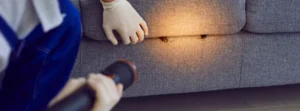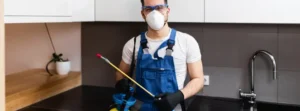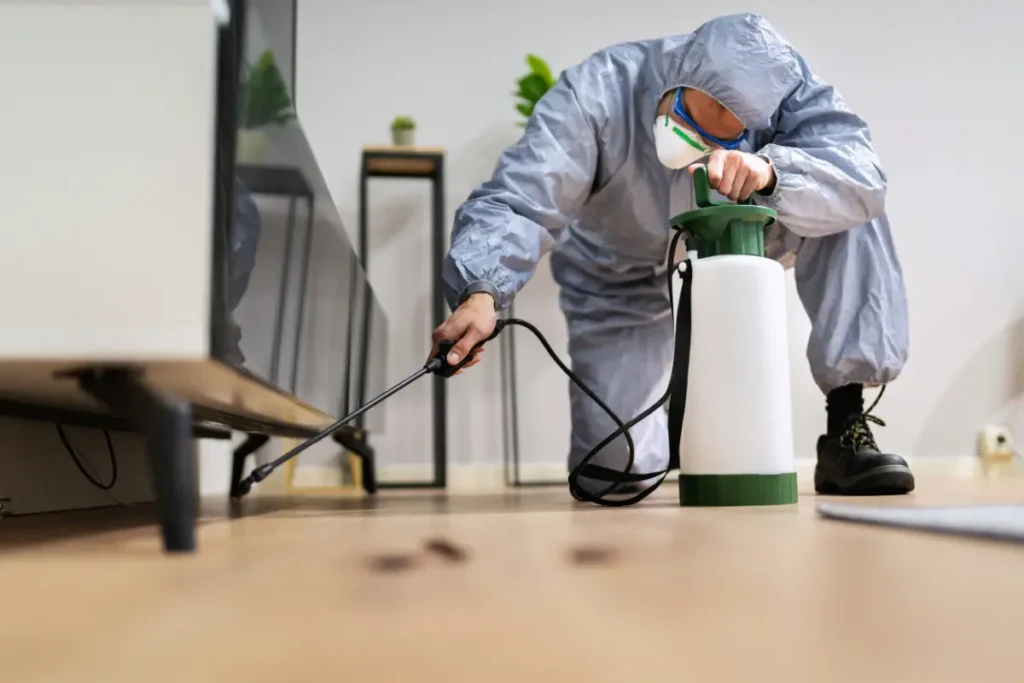Pest control treatment is an essential service for protecting your home and ensuring the safety of your living environment. However, the process involves several steps, and knowing how to prepare for pest control treatment can make a significant difference in the effectiveness of the treatment and the safety of your family and pets. In this guide, we will walk you through all the important aspects of preparing for pest control treatment, from clearing your home to what to expect before, during, and after the service.
What Is Pest Control Treatment?
Before we dive into how to prepare for pest control treatment, let’s first understand what it involves. Pest control treatment refers to the professional service provided to eliminate and prevent pests from invading or infesting your home. These pests can range from insects like ants, cockroaches, and termites to rodents like rats and mice. Pest control professionals use various methods, including chemical treatments, traps, and other eco-friendly solutions to rid your home of these pests.
The main goal of pest control treatment is to eliminate current pest problems and prevent future infestations. When preparing for pest control treatment, you must follow certain procedures to ensure a successful outcome.
Why Is It Important to Prepare for Pest Control Treatment?

Preparing for pest control treatment is critical for several reasons.
- Maximizing Effectiveness: Proper preparation ensures that the treatment can reach all areas where pests are hiding or breeding. If your home is cluttered, it can be challenging for technicians to access these areas.
- Safety: Certain chemicals and treatments may be harmful to humans and pets if not properly managed. By preparing ahead of time, you reduce the risk of exposure.
- Protecting Belongings: Some items may need to be moved or covered to prevent damage or contamination from the treatment products.
- Smooth Execution: When you follow the guidelines provided by your pest control professional, the treatment process will be quicker, more efficient, and more effective.
How Should I Prepare for Pest Control Treatment?
The preparation steps may vary depending on the type of pests you are dealing with, the kind of treatment being used, and the area of your home that needs to be treated. However, there are general steps that apply to most situations.
1. Clear and Clean the Areas to Be Treated
One of the first things you need to do is clean and clear the areas where the pest control treatment will be applied. This includes:
- Clearing Furniture: Move any furniture or large objects away from the walls to give technicians full access to baseboards, corners, and crevices where pests may hide.
- Cleaning the Area: While it’s important to clean areas before pest control treatments, be sure to avoid harsh cleaning products before treatment. Over-cleaning can remove the scent trails left by pests, which help the technician target treatment areas.
- Remove Food and Utensils: For food-related pests, remove all food, dishes, and utensils from countertops and tables. If your kitchen is being treated, be sure to store food in sealed containers or in the refrigerator.
2. Cover or Move Sensitive Items
There are many items around your home that can be sensitive to pest control products, so make sure to either cover or move them away from the treated areas.
- Cover Bedding and Upholstery: Cover or remove any bedding, pillows, or soft furnishings from the areas being treated. Chemicals can damage fabric or leave residues that are harmful if not properly wiped off.
- Protect Electronics: Move any electronics or items that should not be exposed to chemicals, such as televisions, computers, or audio equipment.
- Pets: It’s important to keep your pets in a safe area during the treatment process. If your pest control treatment involves chemicals, it may not be safe for your pets to be in the treated area until it has fully dried.
3. Vacuum and Sweep the Floors
In preparation for pest control treatment, vacuuming and sweeping are essential. By doing this, you can remove pest debris, eggs, or food crumbs that might attract pests or interfere with the treatment process. Vacuuming helps to ensure that the pest control treatment has a clean surface to work on, allowing for better absorption and coverage.
4. Seal Cracks and Holes
One of the most effective ways to prevent pests from entering your home is by sealing cracks and holes in your walls, doors, windows, and around pipes. While pest control treatments can address immediate issues, sealing entry points ensures that pests are less likely to return in the future. Discuss with your pest control provider if any cracks or holes in your home need to be sealed during the treatment.
5. Discuss Specific Areas of Concern
Each pest infestation is unique. If you’ve noticed specific areas where pests are active or concentrated, be sure to discuss this with your pest control professional. Whether it’s under sinks, in the attic, or behind appliances, pointing out these trouble spots allows the technician to target areas more effectively. You may also need to clear these specific areas more thoroughly before the treatment.
6. Ensure Proper Ventilation
After the treatment is completed, proper ventilation will help clear out any lingering chemical fumes and improve air quality. Open windows and doors to allow air to circulate, and make sure there’s no stagnant air left in the room.
7. Follow Special Instructions Provided by the Pest Control Professional
Your pest control technician may have specific instructions depending on the treatment type being used. For example:
- Fumigation Services: If your home is being fumigated, you’ll likely need to vacate the premises entirely for a period of time. Follow the technician’s instructions carefully about when it’s safe to re-enter.
- Chemical Treatments: If a liquid or spray treatment is being applied, you may need to stay out of the treated areas for a specified period to allow the chemicals to dry.
Always ask the pest control technician about the specific details of the treatment process to ensure the best results.
8. Secure Any Areas That Will Be Treated
If you’re having specific rooms treated, or if the outside of your house is being sprayed, make sure these areas are properly secured. You don’t want to risk pets or children coming into contact with any treatment while it’s still wet.
What Should I Do After Pest Control Treatment?

After pest control treatment, there are also a few important steps to follow:
- Wait for Drying: Avoid walking on treated areas or touching surfaces that have been sprayed until the treatment has dried completely.
- Clean and Disinfect: If necessary, wipe down surfaces that were treated with chemicals.
- Monitor for Pests: Keep an eye out for pests in the following weeks to ensure the treatment was effective.
Conclusion
Preparing for pest control treatment is a critical step in ensuring that your home remains safe and pest-free. By following the preparation guidelines and communicating with your pest control provider, you can ensure the treatment is both effective and safe for you, your family, and your pets. If you are unsure of how to prepare, your pest control service provider will provide all the instructions you need. A well-prepared home can make the pest control process more efficient, so you can enjoy a pest-free living environment with peace of mind.


